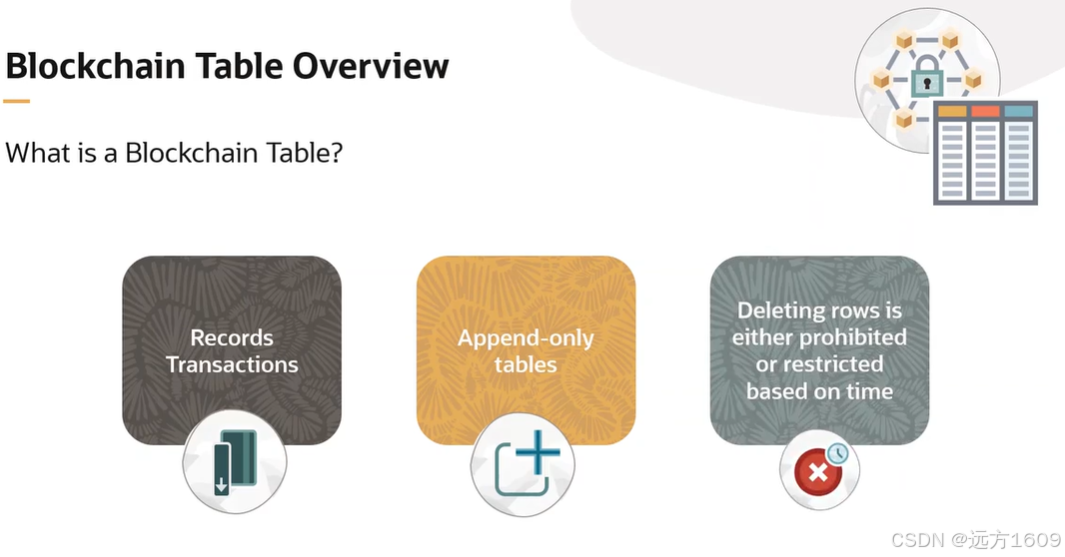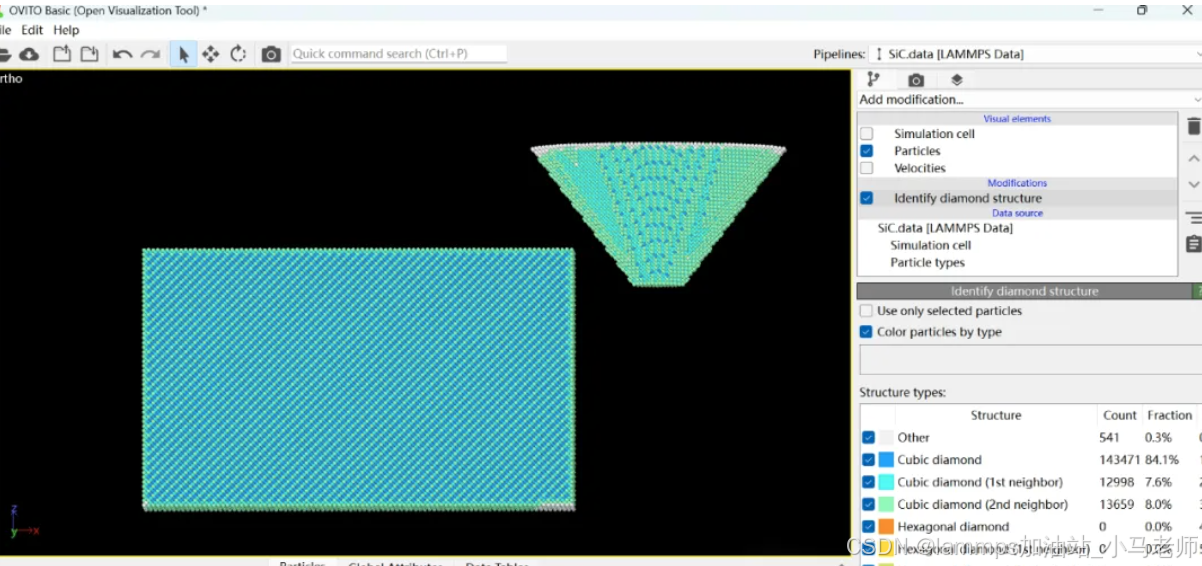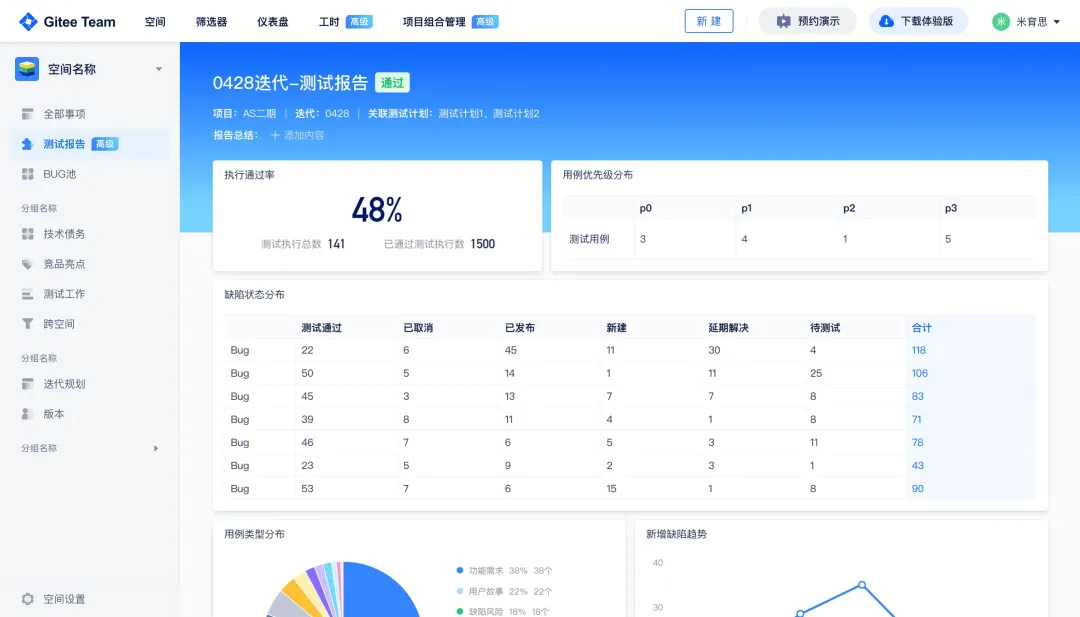Reinforcement Learning with Code 【Code 1. Tabular Q-learning】
Reinforcement Learning with Code 【Code 1. Tabular Q-learning】
This note records how the author begin to learn RL. Both theoretical understanding and code practice are presented. Many material are referenced such as ZhaoShiyu’s Mathematical Foundation of Reinforcement Learning.
This code refers to Mofan’s reinforcement learning course.
文章目录
- Reinforcement Learning with Code 【Code 1. Tabular Q-learning】
- 1.1 Problem and result
- 1.2 Environment
- 1.3 Tabular Q-learning Algorithm
- 1.4 Run this main
- 1.5 Check the Q table
- Reference
1.1 Problem and result
Please consider the problem that a little mouse (denoted by red block) wants to avoid trap (denoted by black block) to get the cheese (denoted by yellow circle). As the figure shows.

This chapter aims to realize tabular Q-learning algorithm sovle this problem.
1.2 Environment
We use the tkinter package of python to build our environment to interact with agent.
import numpy as np
import time
import sys
import tkinter as tk
# if sys.version_info.major == 2: # 检查python版本是否是python2
# import Tkinter as tk
# else:
# import tkinter as tkUNIT = 40 # pixels
MAZE_H = 4 # grid height
MAZE_W = 4 # grid widthclass Maze(tk.Tk, object):def __init__(self):super(Maze, self).__init__()# Action Spaceself.action_space = ['up', 'down', 'right', 'left'] # action space self.n_actions = len(self.action_space)# 绘制GUIself.title('Maze env')self.geometry('{0}x{1}'.format(MAZE_W * UNIT, MAZE_H * UNIT)) # 指定窗口大小 "width x height"self._build_maze()def _build_maze(self):self.canvas = tk.Canvas(self, bg='white',height=MAZE_H * UNIT,width=MAZE_W * UNIT) # 创建背景画布# create gridsfor c in range(UNIT, MAZE_W * UNIT, UNIT): # 绘制列分隔线x0, y0, x1, y1 = c, 0, c, MAZE_H * UNITself.canvas.create_line(x0, y0, x1, y1)for r in range(UNIT, MAZE_H * UNIT, UNIT): # 绘制行分隔线x0, y0, x1, y1 = 0, r, MAZE_W * UNIT, rself.canvas.create_line(x0, y0, x1, y1)# create origin 第一个方格的中心,origin = np.array([UNIT/2, UNIT/2]) # hell1hell1_center = origin + np.array([UNIT * 2, UNIT])self.hell1 = self.canvas.create_rectangle(hell1_center[0] - (UNIT/2 - 5), hell1_center[1] - (UNIT/2 - 5),hell1_center[0] + (UNIT/2 - 5), hell1_center[1] + (UNIT/2 - 5),fill='black')# hell2hell2_center = origin + np.array([UNIT, UNIT * 2])self.hell2 = self.canvas.create_rectangle(hell2_center[0] - (UNIT/2 - 5), hell2_center[1] - (UNIT/2 - 5),hell2_center[0] + (UNIT/2 - 5), hell2_center[1] + (UNIT/2 - 5),fill='black')# create oval 绘制终点圆形oval_center = origin + np.array([UNIT*2, UNIT*2])self.oval = self.canvas.create_oval(oval_center[0] - (UNIT/2 - 5), oval_center[1] - (UNIT/2 - 5),oval_center[0] + (UNIT/2 - 5), oval_center[1] + (UNIT/2 - 5),fill='yellow')# create red rect 绘制agent红色方块,初始在方格左上角self.rect = self.canvas.create_rectangle(origin[0] - (UNIT/2 - 5), origin[1] - (UNIT/2 - 5),origin[0] + (UNIT/2 - 5), origin[1] + (UNIT/2 - 5),fill='red')# pack all 显示所有canvasself.canvas.pack()def get_state(self, rect):# convert the coordinate observation to state tuple# use the uniformed center as the state such as # |(1,1)|(2,1)|(3,1)|...# |(1,2)|(2,2)|(3,2)|...# |(1,3)|(2,3)|(3,3)|...# |....x0,y0,x1,y1 = self.canvas.coords(rect)x_center = (x0+x1)/2y_center = (y0+y1)/2state = ((x_center-(UNIT/2))/UNIT + 1, (y_center-(UNIT/2))/UNIT + 1)return statedef reset(self):self.update()self.after(500) # delay 500msself.canvas.delete(self.rect) # delete origin rectangleorigin = np.array([UNIT/2, UNIT/2])self.rect = self.canvas.create_rectangle(origin[0] - (UNIT/2 - 5), origin[1] - (UNIT/2 - 5),origin[0] + (UNIT/2 - 5), origin[1] + (UNIT/2 - 5),fill='red')# return observation return self.get_state(self.rect) def step(self, action):# agent和环境进行一次交互s = self.get_state(self.rect) # 获得智能体的坐标base_action = np.array([0, 0])reach_boundary = Falseif action == self.action_space[0]: # upif s[1] > 1:base_action[1] -= UNITelse: # 触碰到边界reward=-1并停留在原地reach_boundary = Trueelif action == self.action_space[1]: # downif s[1] < MAZE_H:base_action[1] += UNITelse:reach_boundary = True elif action == self.action_space[2]: # rightif s[0] < MAZE_W:base_action[0] += UNITelse:reach_boundary = Trueelif action == self.action_space[3]: # leftif s[0] > 1:base_action[0] -= UNITelse:reach_boundary = Trueself.canvas.move(self.rect, base_action[0], base_action[1]) # move agents_ = self.get_state(self.rect) # next state# reward functionif s_ == self.get_state(self.oval): # reach the terminalreward = 1done = Trues_ = 'success'elif s_ == self.get_state(self.hell1): # reach the blockreward = -1s_ = 'block_1'done = Falseelif s_ == self.get_state(self.hell2):reward = -1s_ = 'block_2'done = Falseelse:reward = 0done = Falseif reach_boundary:reward = -1return s_, reward, donedef render(self):time.sleep(0.15)self.update()if __name__ == '__main__':def test():for t in range(10):s = env.reset()print(s)while True:env.render()a = 'right's, r, done = env.step(a)print(s)if done:breakenv = Maze()env.after(100, test) # 在延迟100ms后调用函数testenv.mainloop()This part is important that the reward function design is include, which is as follows
reward = { 1 , if reach the cheese − 1 , if reach the trap or reach the boundary 0 , others \text{reward} = \left \{ \begin{aligned} & 1, \quad \text{if reach the cheese} \\ & -1, \quad \text{if reach the trap or reach the boundary} \\ & 0, \quad \text{others} \end{aligned} \right. reward=⎩ ⎨ ⎧1,if reach the cheese−1,if reach the trap or reach the boundary0,others
We need to explan some function of the class Maze.
- First, the function
_build_mazecreates the inital maze location.
In this example we use the left up coordination of each grid as the state of each block. - Second, the function
get_stateconverts the coordination of each grid to numerical representation such as ( 1 , 1 ) , ( 1 , 2 ) , ⋯ (1,1),(1,2),\cdots (1,1),(1,2),⋯. - Third, the function
resetrenew the state which means placing the mouse in the original grid. - Then, the function
stepwe let the agent interact with envrionment for one step, ang get the reward after the action. - Then, the function
rendercontrols updating the window.
1.3 Tabular Q-learning Algorithm
import numpy as np
import pandas as pdclass QLearningTable():def __init__(self, actions, learning_rate=0.05, reward_decay=0.9, e_greedy=0.9):self.actions = actions # action listself.lr = learning_rateself.gamma = reward_decayself.epsilon = e_greedy # epsilon greedy update policyself.q_table = pd.DataFrame(columns=self.actions, dtype=np.float64)def check_state_exist(self, state):if state not in self.q_table.index:# append new state to q table, use the coordinate as the observation# self.q_table = self.q_table.append( # DataFrame.append is invalid# pd.Series(# [0]*len(self.actions),# index=self.q_table.columns,# name=state,# )# )self.q_table = pd.concat([self.q_table,pd.DataFrame(data=np.zeros((1,len(self.actions))),columns = self.q_table.columns,index = [state])])def choose_action(self, observation):self.check_state_exist(observation)# action selection# epsilon greedy algorithmif np.random.uniform() < self.epsilon:state_action = self.q_table.loc[observation, :]# some actions may have the same value, randomly choose on in these actions# state_action == np.max(state_action) generate bool mask# choose best actionaction = np.random.choice(state_action[state_action == np.max(state_action)].index)else:# choose random actionaction = np.random.choice(self.actions)return actiondef learn(self, s, a, r, s_):self.check_state_exist(s_)q_predict = self.q_table.loc[s, a]if s_ != 'success':q_target = r + self.gamma * self.q_table.loc[s_, :].max() # next state is not terminalelse:q_target = r # next state is terminalself.q_table.loc[s, a] += self.lr * (q_target - q_predict) # update
We store the Q-table as a DataFrame of pandas. The explanation of the functions are as follows.
- First, the function
check_state_existcheck the existence of one state, if not we append it to the Q-table. This is because once the state-action pair is visited, then we update it into the Q-table. - Second, the function
choose_actionis following the ϵ \epsilon ϵ-greedy algorithm
π ( a ∣ s ) = { 1 − ϵ ∣ A ( s ) ∣ ( ∣ A ( s ) ∣ − 1 ) , for the geedy action ϵ ∣ A ( s ) ∣ , for the other ∣ A ( s ) ∣ − 1 actions \pi(a|s) = \left \{ \begin{aligned} 1 - \frac{\epsilon}{|\mathcal{A}(s)|}(|\mathcal{A(s)}|-1), & \quad \text{for the geedy action} \\ \frac{\epsilon}{|\mathcal{A}(s)|}, & \quad \text{for the other } |\mathcal{A}(s)|-1 \text{ actions} \end{aligned} \right. π(a∣s)=⎩ ⎨ ⎧1−∣A(s)∣ϵ(∣A(s)∣−1),∣A(s)∣ϵ,for the geedy actionfor the other ∣A(s)∣−1 actions
- Third, the function
learnis update the q value as Q-learning algorithm purposed.
Q-learning : { q t + 1 ( s t , a t ) = q t ( s t , a t ) − α t ( s t , a t ) [ q t ( s t , a t ) − ( r t + 1 + γ max a ∈ A ( s t + 1 ) q t ( s t + 1 , a ) ) ] q t + 1 ( s , a ) = q t ( s , a ) , for all ( s , a ) ≠ ( s t , a t ) \text{Q-learning} : \left \{ \begin{aligned} \textcolor{red}{q_{t+1}(s_t,a_t)} & \textcolor{red}{= q_t(s_t,a_t) - \alpha_t(s_t,a_t) \Big[q_t(s_t,a_t) - (r_{t+1}+ \gamma \max_{a\in\mathcal{A}(s_{t+1})} q_t(s_{t+1},a)) \Big]} \\ \textcolor{red}{q_{t+1}(s,a)} & \textcolor{red}{= q_t(s,a)}, \quad \text{for all } (s,a) \ne (s_t,a_t) \end{aligned} \right. Q-learning:⎩ ⎨ ⎧qt+1(st,at)qt+1(s,a)=qt(st,at)−αt(st,at)[qt(st,at)−(rt+1+γa∈A(st+1)maxqt(st+1,a))]=qt(s,a),for all (s,a)=(st,at)
1.4 Run this main
Run this main script that we can run the all codes.
from maze_env_custom import Maze
from RL_brain import QLearningTableMAX_EPISODE = 30def update():for episode in range(MAX_EPISODE):# initial observation, observation is the rect's coordiante# observation is [x0,y0, x1,y1]observation = env.reset() while True:# fresh envenv.render()# RL choose action based on observation ['up', 'down', 'right', 'left']action = RL.choose_action(str(observation))# RL take action and get next observation and rewardobservation_, reward, done = env.step(action)# RL learn from this transitionRL.learn(str(observation), action, reward, str(observation_))# swap observationobservation = observation_# break while loop when end of this episodeif done:break# show q_tableprint(RL.q_table)print('\n')# end of gameprint('game over')env.destroy()if __name__ == "__main__":env = Maze()RL = QLearningTable(env.action_space)env.after(100, update)env.mainloop()1.5 Check the Q table
After a long run we can check the q-table to judge wheter the learning is reasonable. The q-table is as follows:
up down right left
(1.0, 1.0) -0.226208 0.000963 0.000000 -9.750000e-02
(1.0, 2.0) 0.000024 0.005773 0.000000 -5.000000e-02
(2.0, 1.0) -0.050000 0.000000 0.000000 5.247904e-07
(2.0, 2.0) 0.000000 -0.050000 -0.050000 0.000000e+00
block_2 0.000000 0.000000 0.000000 1.793534e-04
(2.0, 4.0) -0.097500 -0.050000 0.336315 2.916072e-03
(1.0, 4.0) 0.002162 -0.140781 0.112337 -5.000000e-02
(1.0, 3.0) 0.000008 0.033479 -0.050000 -9.739821e-02
block_1 0.000000 0.097500 0.000000 0.000000e+00
(4.0, 2.0) 0.000000 0.006525 -0.050000 -5.000000e-02
success 0.000000 0.000000 0.000000 0.000000e+00
(3.0, 1.0) -0.050000 -0.047750 0.000000 0.000000e+00
(3.0, 4.0) 0.722610 -0.050000 0.000000 1.298347e-02
(4.0, 1.0) -0.050000 0.000101 -0.050000 0.000000e+00
(4.0, 3.0) 0.000000 0.000000 0.000000 1.426250e-01
For example, when at the original place if the mouse wants to move up or move left it will reach the boundary and get reward − 1 -1 −1. Hence the state value in q-table is minus.
Reference
赵世钰老师的课程
莫烦ReinforcementLearning course
相关文章:

Reinforcement Learning with Code 【Code 1. Tabular Q-learning】
Reinforcement Learning with Code 【Code 1. Tabular Q-learning】 This note records how the author begin to learn RL. Both theoretical understanding and code practice are presented. Many material are referenced such as ZhaoShiyu’s Mathematical Foundation o…...

解决:Uncaught (in promise) SyntaxError: “[object Object]“ is not valid JSON 问题的过程
1、问题描述: 其一、报错为: Uncaught (in promise) SyntaxError: "[object Object]" is not valid JSON 中文为: 未捕获(承诺中)语法错误:“[object Object]”不是有效的 JSON 其二、问题描…...

机器学习-New Optimization
机器学习(New Optimization) 前言: 学习资料 videopptblog 下面的PPT里面有一些符号错误,但是我还是按照PPT的内容编写公式,自己直到符号表示什么含义就好了 Notation 符号解释 θ t \theta_t θt第 t 步时,模型的参数 Δ L …...

3d虚拟vr汽车实景展厅吸引更多潜在消费者
随着人们对生活品质的追求,越来越多的消费者开始关注汽车的外观设计、内饰配置等方面。传统的展示方式已经不能满足消费者的需求,车辆VR虚拟漫游展示应运而生。借助VR虚拟现实和web3d开发建模技术,对汽车的外观、造型及信息数据进行数字化处理…...

Java里的static import使用小结
Java里的static import使用小结 换了工作要把Java重新捡起来了,这个在大学里用过的语言,虽然不复杂,还是有一些奇怪的地方的。比如static Slgluimport。 Static import是JDK 1.5中引进的特性,不过读大学那会还真没注意到。它的作…...

go程序使用tcp短连接报:only one usage of each socket address
环境及现象 Win10上位机(C#,WPF)后台使用go作为服务。 连接情况 C#连接大概60个TCP长连接(设备)。 后台go服务连接60个UDP短连接(设备附属硬件), 10个TCP短连接(PLC,modbus通讯&a…...

十分钟配置好Neovim go开发环境(其他语言一样)
文章目录 前言仓库地址用法快捷键问题反馈 前言 这篇文章的目的是为了分享下我自己的Neovim配置。 本人是Golang程序员,最开始使用的IDE是JetBrains Goland。有一说一这个ide适配度很高,认识的很多人都使用这个。但是它也有几个对我来说的缺点…...

Linux第八章之进程概念
一、冯诺依曼体系结构 关于冯诺依曼,必须强调几点: 这里的存储器指的是内存不考虑缓存情况,这里的CPU能且只能对内存进行读写,不能访问外设(输入或输出设备)外设(输入或输出设备)要输入或者输出数据,也只能写入内存或…...

怎么学习Java并发编程相关技术? - 易智编译EaseEditing
学习Java并发编程可以通过多种方式进行,包括但不限于以下几种: 在线教程和学习平台: 网上有许多免费和付费的Java并发编程教程和学习平台,如Coursera、Udemy、edX、Codecademy等。这些平台提供结构化的课程和练习,适…...

vue3 +element动态表单实现
可以直接复制,接口看后端 父页面 <schedulesref"schedulesRef":dxbz"props.dxbz":jdlx"props.jdlx":woId"myWoId":addendumList"formInline.addendumList"v-if"addendumShow"addendum"addendu…...

Linux部署jar包,隐藏命令行参数
Linux部署jar包,隐藏命令行参数 一、背景需求二、查阅资料三、实现隐藏库3.1、测试test.c3.2、设置隐藏库3.3、验证 四、应用jar启动命令五、直接应用结果 最新项目安全检测,发现配置文件中数据库密码,redis密码仍处理明文状态 于是整理了一篇…...

JDBC-笔记
JDBC 1. JDBC介绍 JDBC(Java Database Connectivity)是一种用于连接和操作数据库的 Java API。 通过Java操作数据库的流程 第一步:编写Java代码 第二步:Java代码将SQL发送到MySQL服务端 第三步:MySQL服务端接收到SQ…...
)
Rust的入门篇(中)
Rust的入门篇(中) 这是接上面一篇rust入门篇(上)文章 22. 包管理一 mod nation {pub mod government {pub fn govern() {}}mod congress {pub fn legislate() {}}mod court {fn judicial() {super::congress::legislate();}} }fn main() {nation::government::govern(); }23.…...

手机设置全局代理ip步骤
在互联网时代,隐私和安全问题备受关注。使用全局代理能够帮助我们保护个人信息,突破地理限制,并提高网络速度。但是,你是否对全局代理的安全性存有疑虑?而且,如何在手机上设置全局代理呢?今天就…...

spring boot+thymeleaf+semantic ui 分页
参考: https://my.oschina.net/ayyao/blog/898041 后端 springboot 使用: com.github.pagehelper.PageInfo,作为分页对象 <!--引入分页插件--> <dependency><groupId>com.github.pagehelper</groupId><artifa…...

【JVM】(一)深入理解JVM运行时数据区
文章目录 一、JVM 运行流程二、虚拟机栈(线程私有)三、本地方法栈 (线程私有)四、方法区(元数据区)五、堆(线程共享)六、程序计数器(线程私有) 一、JVM 运行流…...

C++ QRegExpValidator
//正在表达式限制输入 QString str "\\b(?:(?:25[0-5]|2[0-4][0-9]|[01]?[0-9][0-9]?)\\.){3}(?:25[0-5]|2[0-4][0-9]|[01]?[0-9][0-9]?)\\b"; ui->lineEdit->setValidator(new QRegExpValidator(QRegExp(str))); //用于占位 ui->lineEdit->setI…...

备战秋招 | 笔试强训19
目录 一、选择题 二、编程题 三、选择题题解 四、编程题题解 一、选择题 1、二分查找的时间复杂度() A. O(N*log(N)) B. O(N) C. O(log(N)) D. O(N^2) 2、有一个单向链表中有一个A、B两个相邻元素,有一个指针p指向元素A,现将…...

第一章 计算机网络概述
第一章 计算机网络概述 1.1 计算机网络在信息时代的作用 1.2 因特网概述 网络分类: 网络:许多计算机连接在一起的的局域网; 互联网:internet许多网络连接在一起; 因特网:Internet 全球最大的互联网&…...

谷粒商城第六天-商品服务之分类管理下的获取三级分类树形列表
目录 一、总述 1.1 前端思路 1.2 后端思路 二、前端部分 2.1 在网页中建好目录及菜单 2.1.1 建好商品目录 2.1.2 建好分类管理菜单 编辑 2.2 编写组件 2.2.1 先完成组件文件的创建 2.2.2 编写组件 2.2.2.1 显示三级分类树形列表 三、后端部分 3.1 编写商品分类…...

23-Oracle 23 ai 区块链表(Blockchain Table)
小伙伴有没有在金融强合规的领域中遇见,必须要保持数据不可变,管理员都无法修改和留痕的要求。比如医疗的电子病历中,影像检查检验结果不可篡改行的,药品追溯过程中数据只可插入无法删除的特性需求;登录日志、修改日志…...

Rust 异步编程
Rust 异步编程 引言 Rust 是一种系统编程语言,以其高性能、安全性以及零成本抽象而著称。在多核处理器成为主流的今天,异步编程成为了一种提高应用性能、优化资源利用的有效手段。本文将深入探讨 Rust 异步编程的核心概念、常用库以及最佳实践。 异步编程基础 什么是异步…...

MySQL 8.0 OCP 英文题库解析(十三)
Oracle 为庆祝 MySQL 30 周年,截止到 2025.07.31 之前。所有人均可以免费考取原价245美元的MySQL OCP 认证。 从今天开始,将英文题库免费公布出来,并进行解析,帮助大家在一个月之内轻松通过OCP认证。 本期公布试题111~120 试题1…...

NLP学习路线图(二十三):长短期记忆网络(LSTM)
在自然语言处理(NLP)领域,我们时刻面临着处理序列数据的核心挑战。无论是理解句子的结构、分析文本的情感,还是实现语言的翻译,都需要模型能够捕捉词语之间依时序产生的复杂依赖关系。传统的神经网络结构在处理这种序列依赖时显得力不从心,而循环神经网络(RNN) 曾被视为…...

学校时钟系统,标准考场时钟系统,AI亮相2025高考,赛思时钟系统为教育公平筑起“精准防线”
2025年#高考 将在近日拉开帷幕,#AI 监考一度冲上热搜。当AI深度融入高考,#时间同步 不再是辅助功能,而是决定AI监考系统成败的“生命线”。 AI亮相2025高考,40种异常行为0.5秒精准识别 2025年高考即将拉开帷幕,江西、…...

Python Ovito统计金刚石结构数量
大家好,我是小马老师。 本文介绍python ovito方法统计金刚石结构的方法。 Ovito Identify diamond structure命令可以识别和统计金刚石结构,但是无法直接输出结构的变化情况。 本文使用python调用ovito包的方法,可以持续统计各步的金刚石结构,具体代码如下: from ovito…...

C#中的CLR属性、依赖属性与附加属性
CLR属性的主要特征 封装性: 隐藏字段的实现细节 提供对字段的受控访问 访问控制: 可单独设置get/set访问器的可见性 可创建只读或只写属性 计算属性: 可以在getter中执行计算逻辑 不需要直接对应一个字段 验证逻辑: 可以…...

怎么让Comfyui导出的图像不包含工作流信息,
为了数据安全,让Comfyui导出的图像不包含工作流信息,导出的图像就不会拖到comfyui中加载出来工作流。 ComfyUI的目录下node.py 直接移除 pnginfo(推荐) 在 save_images 方法中,删除或注释掉所有与 metadata …...

从“安全密码”到测试体系:Gitee Test 赋能关键领域软件质量保障
关键领域软件测试的"安全密码":Gitee Test如何破解行业痛点 在数字化浪潮席卷全球的今天,软件系统已成为国家关键领域的"神经中枢"。从国防军工到能源电力,从金融交易到交通管控,这些关乎国计民生的关键领域…...

从面试角度回答Android中ContentProvider启动原理
Android中ContentProvider原理的面试角度解析,分为已启动和未启动两种场景: 一、ContentProvider已启动的情况 1. 核心流程 触发条件:当其他组件(如Activity、Service)通过ContentR…...
